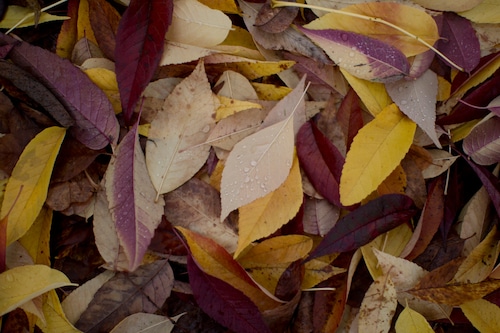OSU Extension offers timely guidance on pest control, fertilization, garden maintenance, and other topics. Not every region in Oregon will benefit equally from these suggestions. Get in touch with the Extension office in your area for further details.
Sustainable gardening techniques are promoted by the Oregon State University Extension Service.
Instead of using reactive pest treatment, use preventive pest management. Prior to taking action, identify and track issues, then choose the least harmful course of action. Predators and parasitoids that consume insect pests are examples of biological control agents that should be preserved.
Planning
-
Force spring bulbs for indoor blooms in December.
Maintenance and cleanup
-
Service lawn mower
.
-
Check potatoes in storage and remove any going bad.
-
Place a portable cold frame over rows of winter vegetables.
-
Placemulch around berries
for winter protection.
-
Coverrhubarb
and
asparagus
beds with composted manure and straw.
-
Rake and compost leaves that are free of diseases and insects. Use mulch to prevent erosion and compaction from rain.
-
To protect built-in sprinkler systems, drain the system and insulate the valve mechanisms.
-
Clean and oil your lawnmower and other garden equipment and tools before storing them for winter.Drain and store hoses
carefully to avoid damage from freezing. Renew mulch around perennial flowerbeds after removing weeds.
-
Protect tender evergreens from drying wind.
-
Tie limbs of upright evergreens to prevent breakage by snow or ice.
-
Trim chrysanthemums to 4 to 6 inches after they finish blooming.
-
Leave ornamental grasses up in winter to provide texture in the landscape. Cut them back a few inches above the ground in early spring.
-
Western Oregon:
Last chance toplant cover crops
for soil building. You can also use a 3- to 4-inch layer of leaves, spread over the garden plot, to eliminate winter weeds, suppress early spring weeds and prevent soil compaction by rain.
-
Western Oregon:
Watch for wet soil and drainage problems in yard during heavy rains. Tiling, ditching and French drains are possible solutions. Considerrain gardens
and bioswales as a long-term solution.
-
Western Oregon:
Take cuttings
of rhododendrons and camellias for propagation; propagate begonias from leaf cuttings.
-
Western Oregon:
Prune roses (tea and floribunda, but NOT climbers and ramblers) to around 3 feet in height to prevent winter damage.
-
Central/eastern Oregon:
If there is no snow cover and the ground is warm enough, water your newly planted perennials, trees and shrubs every 6 to 8 weeks. Give them a deep soaking to keep them from drying out.
-
Central/eastern Oregon:
Wrap the trunks of young, thin-barked trees (maples, aspen, ash) with paper tree wrap late in the month to prevent sunscald. Remove in April. Wrap new trees two to three years in a row until the outer bark has thickened.
Planting/propagation
-
Plant a window garden
of lettuce, chives and parsley.
-
It s a good time toplant trees and shrubs
. Consider varieties that supply food and shelter to birds, such as sumac, elderberry, flowering currant and mock orange.
-
Western Oregon:
Still time to plant spring-flowering bulbs, such as tulips, daffodils, hyacinths and crocuses. Don t delay.
-
Western Oregon:
Good time toplant garlic
for harvest next summer, and to transplant landscape trees and shrubs.
Pest monitoring and management
Read the pesticide label carefully and only use chemical controls when absolutely required. Think on cultural controls first, followed by biological and physical controls. Select the least harmful options and use them sparingly. Horticultural oils, insecticidal soaps, botanical insecticides, and both synthetic and organic pesticides are a few examples.
-
Rake and destroy leaves from fruit trees
that were diseased this year. Remove and discard mummified fruit.
-
Check firewood for insect infestations. Burn affected wood first and don t store inside.
-
Treat peaches four weeks after leaf fall spray for peach leaf curl and shothole diseases.
-
Western Oregon:
Moss appearing in lawn
may mean too much shade or poor drainage. Correct site conditions if moss is bothersome.
-
Western Oregon:
Bait garden for slugs
during rainy periods. Use traps or phosphate baits, which are pet-safe.
-
Monitor landscape plants for problems. Don t treat unless a problem is identified.
Houseplants and indoor gardening
-
Reduce fertilizer applications.
Trade-name goods and services are solely used as examples. The Oregon State University Extension Service does not support these goods and services or aim to discriminate against those that are not listed.
Note: Every piece of content is rigorously reviewed by our team of experienced writers and editors to ensure its accuracy. Our writers use credible sources and adhere to strict fact-checking protocols to verify all claims and data before publication. If an error is identified, we promptly correct it and strive for transparency in all updates, feel free to reach out to us via email. We appreciate your trust and support!



